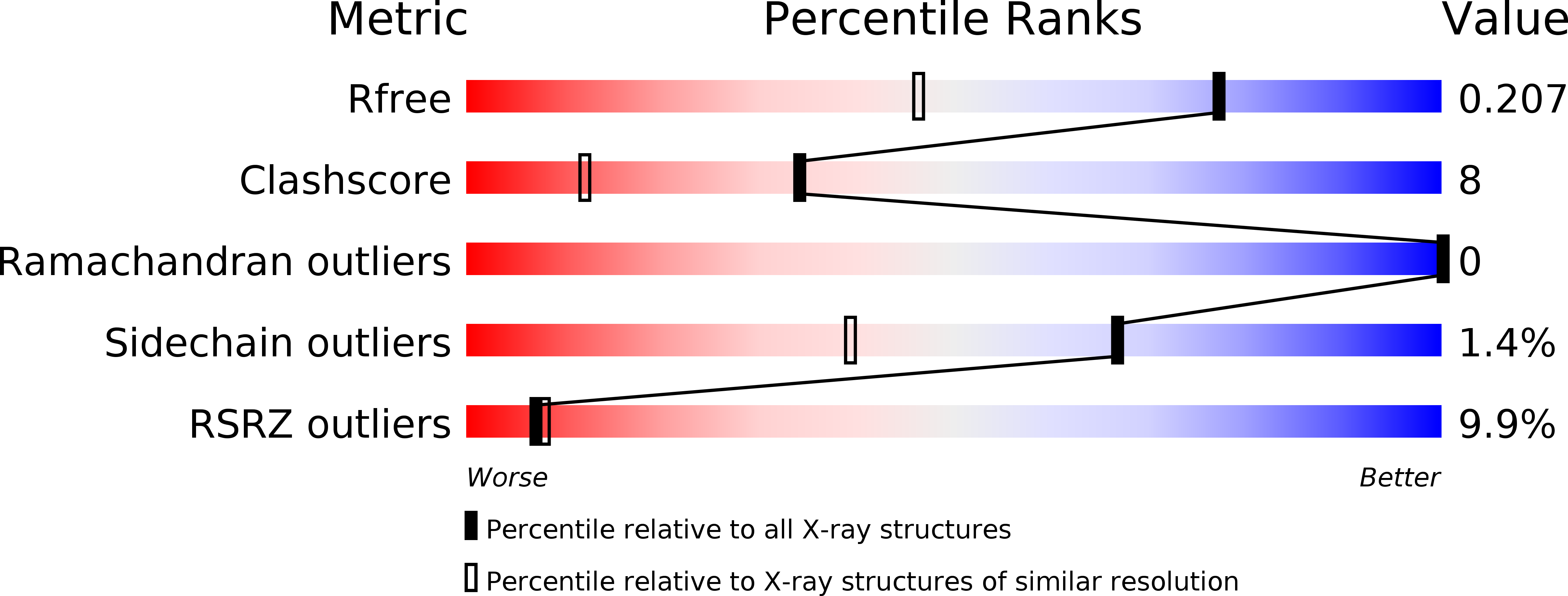GTP Cyclohydrolase II Structure and Mechanism.
Ren, J., Kotaka, M., Lockyer, M., Lamb, H.K., Hawkins, A.R., Stammers, D.K.(2005) J Biol Chem 280: 36912
- PubMed: 16115872
- DOI: https://doi.org/10.1074/jbc.M507725200
- Primary Citation of Related Structures:
2BZ0, 2BZ1 - PubMed Abstract:
GTP cyclohydrolase II converts GTP to 2,5-diamino-6-beta-ribosyl-4(3H)-pyrimidinone 5'-phosphate, formate and pyrophosphate, the first step in riboflavin biosynthesis. The essential role of riboflavin in metabolism and the absence of GTP cyclohydrolase II in higher eukaryotes makes it a potential novel selective antimicrobial drug target. GTP cyclohydrolase II catalyzes a distinctive overall reaction from GTP cyclohydrolase I; the latter converts GTP to dihydroneopterin triphosphate, utilized in folate and tetrahydrobiopterin biosynthesis. The structure of GTP cyclohydrolase II determined at 1.54-A resolution reveals both a different protein fold to GTP cyclohydrolase I and distinctive molecular recognition determinants for GTP; although in both enzymes there is a bound catalytic zinc. The GTP cyclohydrolase II.GMPCPP complex structure shows Arg(128) interacting with the alpha-phosphonate, and thus in the case of GTP, Arg(128) is positioned to act as the nucleophile for pyrophosphate release and formation of the proposed covalent guanylyl-GTP cyclohydrolase II intermediate. Tyr(105) is identified as playing a key role in GTP ring opening; it is hydrogen-bonded to the zinc-activated water molecule, the latter being positioned for nucleophilic attack on the guanine C-8 atom. Although GTP cyclohydrolase I and GTP cyclohydrolase II both use a zinc ion for the GTP ring opening and formate release, different residues are utilized in each case to catalyze this reaction step.
Organizational Affiliation:
Division of Structural Biology, The Wellcome Trust Centre for Human Genetics, University of Oxford, Roosevelt Drive, Oxford, OX3 7BN, United Kingdom.



















